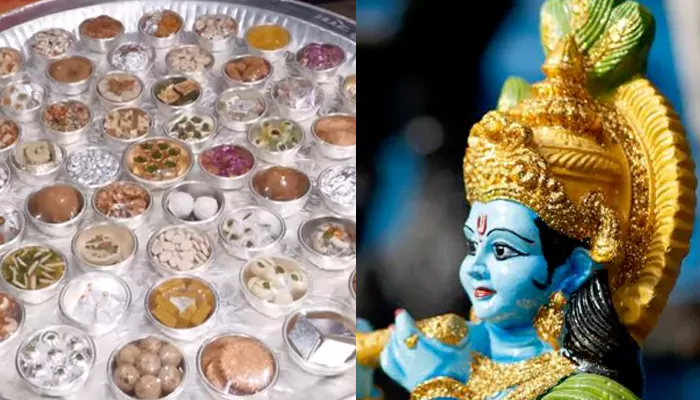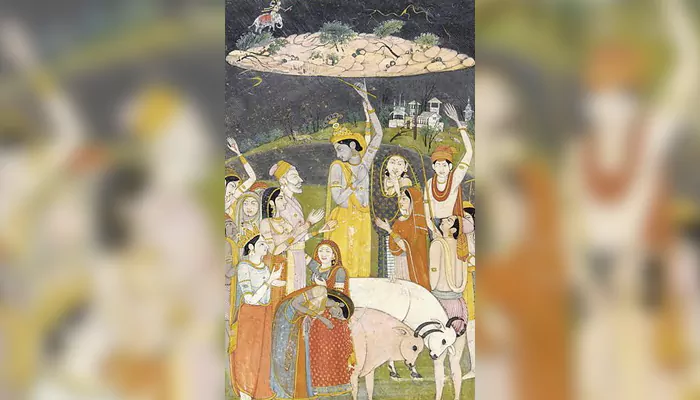
No, it's not a random number!
Lord Krishna was known for his love for food, so it’s no surprise that a grand feast forms the heart of Janmashtami celebrations. This feast is called Chappan Bhog, named for the 56 special dishes offered to him. These are pure, sattvic foods, prepared without onions or garlic and made with traditional desi ghee, carefully crafted to include all five tastes: sweet, sour, spicy, salty, bitter, and savory. But here’s a curious thought many don’t stop to ask: why exactly 56 items? Why not 55 or any other number that might seem simpler?
So, this Janmashtami, let's uncover the fascinating story behind this unique tradition and understand why these 56 offerings hold such special significance.
One popular tale traces back to the Gopis of Gokul, who longed to win Krishna’s heart. They worshipped Goddess Katyayani for a month and prepared a grand feast of 56 dishes as an expression of their devotion.
However, the more widely celebrated legend is set in Braj, where villagers once planned to honor Lord Indra, the rain god. Krishna advised them instead to worship Govardhan Mountain, their true provider of fruits, vegetables, and fodder. Angered, Indra unleashed a fierce storm, causing floods. To save the people and cattle, Krishna lifted the Govardhan hill on his little finger for seven days without eating a morsel.

Legend says Krishna loved to have eight meals a day. So, to honor his divine strength during those seven days, villagers prepared 56 dishes - 8 meals multiplied by 7 days. This heartfelt offering became a timeless tradition symbolizing devotion and gratitude.
The 56 dishes are pure, sattvic foods made without onions or garlic, cooked lovingly in desi ghee. They cover all six tastes (sweet, sour, salty, bitter, spicy, and savory), delighting every palate. Typical items include kheer, rabdi, jalebi, peda, pakoras, fruits like mango and banana, nuts, chaach, ghee, honey, and many more. These offerings reflect Krishna’s fondness for milk products and simple yet rich flavors rooted in Indian culinary heritage.
Chappan Bhog is offered to Lord Jagannath in the temple at Puri.
— India Wants To Know: India's First Panel Quiz Show (@IWTKQuiz) February 10, 2023
It is 56 (Chappan) items as Lord Krishna ate 8 items a day and when he lifted the Govardhan hill and saved the village from the wrath of Indra, he skipped his 8 items for 7 days.
Hence 8 x 7 = 56. pic.twitter.com/0XOlxS7xM6
(Credit: India Wants To Know: India's First Panel Quiz Show)
The tradition of offering multiple dishes to deities is rooted in the belief that variety pleases the senses and the divine, making Chappan Bhog a lavish expression of love and devotion.
Each dish in Chappan Bhog is meticulously prepared to maintain purity, as only fresh, natural ingredients and traditional cooking methods are used, reflecting the spiritual significance of the offering.
The offering often includes seasonal fruits and sweets that are locally available, symbolizing a connection to nature and the cycles of harvest.
Serving 56 dishes is also a way to celebrate abundance and prosperity, reminding devotees of Krishna’s role as a protector and provider.
In many temples, Chappan Bhog is prepared with the help of skilled cooks who have inherited family recipes passed down through generations, preserving culinary heritage.
The ritual of offering Chappan Bhog is accompanied by devotional songs and prayers, enhancing the spiritual atmosphere.
Happy Janmashtami!